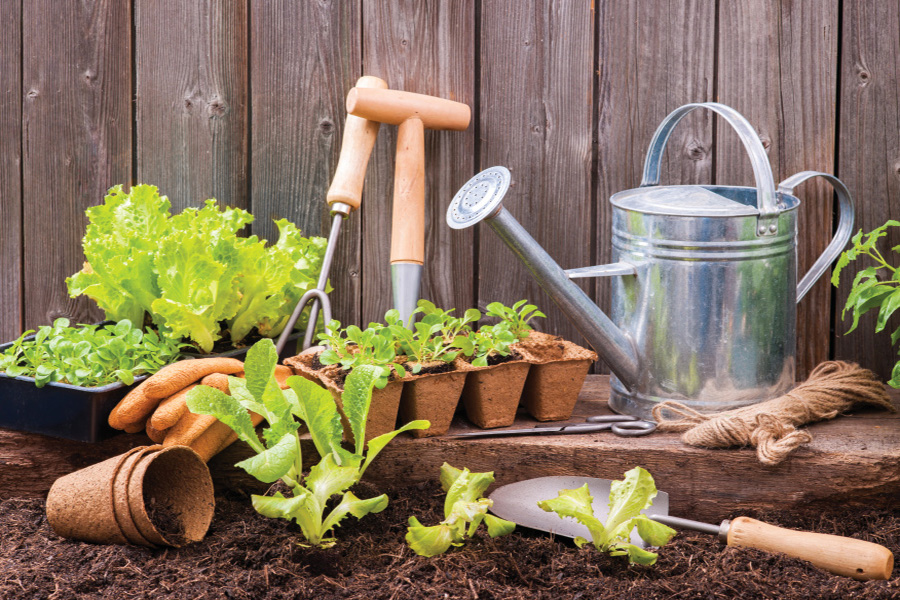
Spring is a time for planting and regrowth, but it is also the time for a little spring cleaning. When we envision spring cleaning, we think about cleaning windows, scrubbing floors and shaking out rugs, but there is plenty to do in your landscape and garden shed, too. These once-a-year chores will give your landscape the boost it needs for a year of growth.
Start in the garden shed or garage by looking for expired or unused chemicals and fertilizers. If you aren’t going to use them or can’t remember why you bought them, it’s time to get rid of them. So, take them to your county or community hazardous waste collection site. Many chemicals expire and aren’t useful anymore, so it is best to clean them out.
While in the shed, take stock of your tools. This is an excellent time to evaluate what you are actually using and what is just taking up space. For your beloved tools, get them into shape with a good cleaning and sharpening. Many local hardware stores will sharpen clippers, loppers and mower blades for a reasonable charge. This step will increase the longevity of your tools and help to keep your landscape looking its best.
If you hold onto pots or plant containers, go through them and decide what needs to be tossed, donated or used. Then store the rest in a way that won’t collect water and breed mosquitos later in the season.
See more: Beneficial Insects That Keep Your Garden Healthy
If you stopped or slowed down your watering during the dry, colder months, doing a check on the irrigation system is an excellent idea. Run all your zones for a test period and inspect each sprinkler head. See that the heads are pointed in the correct direction and aren’t leaking. Next, adjust your irrigation timer so the runs are enough to deliver ½ to ¾ inch per irrigation cycle. For more information on how to do this, visit the UF/IFAS Florida-Friendly Landscaping website (ffl.ifas.ufl.edu).
Many gardeners allow the fallen leaves to stay on the lawn during the cooler months as an insulating ground cover or to provide for wildlife. In the spring, rake the remaining leaves off your turf grass and use those leaves as a natural mulch in your landscape beds, or put them in your compost pile or natural area. If the mulch layer in your landscape beds has diminished to less than 3 inches deep, you can refresh the beds with pine straw, pine nuggets or shredded leaves. There is no need to remove the old mulch; just add new mulch on top for a fresh spring effect.
Spring is an excellent time to evaluate your landscape for invasive exotic plants. Commonly found invasive exotics like Mexican petunia, coral ardisia, wedelia and Japanese honeysuckle can quickly take over your yard. Getting these removed before another growing season can save you time and money. A new UF/IFAS publication, “Plant This – Not That,” provides invasive plant identification and suggests alternatives to use in your landscape (ifasbooks.ifas.ufl.edu/p-1658-plant-this-not-that.aspx).
Once the spring yard cleanup is done, you’ll have time and space to plan for new additions to the landscape. Consider adding native trees or shrubs with berries to attract birds or putting in plants for pollinators and butterflies. A little garden planning will help you get the right plant in the right place.
About the Author: Wendy Wilber is the statewide Master Gardener Volunteer Program coordinator and an environmental horticulture agent for UF/IFAS Extension.
See more: 4 Benefits of Home Gardening








